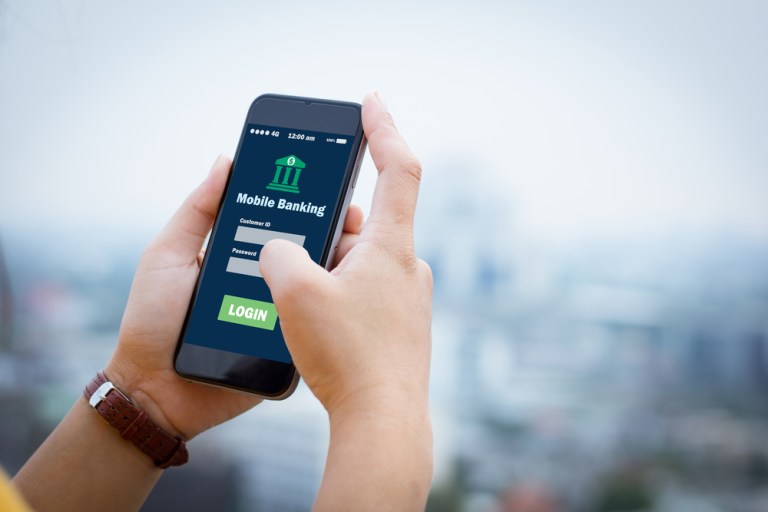Consumers in the U.K. really, really like to keep tabs on their banking accounts.
In fact, in 2018, they did so more than seven times a week via mobile banking apps. That not only demonstrates the power of digital technology, but also signals that traditional financial institutions there face tremendous pressure to “maintain their relevance in the face of FinTech competition,” according to a new report from App Annie.
Its new “State of Mobile 2019” shows how apps are taking more command when it comes to global payments and commerce. And it shows how various digital payment technologies can combine to spark larger trends. Take Australia, where mobile banking app users in 2018 checked their bank apps nearly 10 times per week, fueled by an embedded culture of peer-to-peer transfers within banking apps, the report said. “By contrast, banking apps in Japan only feature wire transfers, and subsequently saw one-third of the global average weekly sessions per user in 2018, despite 15 percent growth from 2016.”
Mobile banking is an especially significant example of the growth of digital in global payments and commerce. Inertia among long-standing financial institutions remains a widespread force, but there is increasing competition for consumers from challenger banks, along with the innovative FinTech push sparked by PSD2 and other initiatives. The report found that the average consumer checked his or her bank account via mobile nearly once per day in 2018 — a 35 percent increase from 2016.
Problem Solver
The increasing popularity of retail banking apps can solve two significant problems, the report said. They can reduce friction for consumers and encourage “significant cost savings potential for banks. Increasingly, we trust mobile apps with our most sensitive information and are engaging with retail banking brands more frequently than ever before across the board.”
Advertisement: Scroll to Continue
More broadly, the report said that global downloads of finance apps reached 3.4 billion in 2018, up 75 percent from 2018. That’s thanks in large part to digital payments progress in what the report called emerging markets — progress that the report says goes a long way toward bringing the unbanked into the mainstream financial system and offering microloans to consumers without credit cards, among other benefits.
“Brazil, India and Indonesia saw the strongest growth in app downloads from 2016 to 2018,” the report said. “Notably, Indonesia experienced nearly 400 percent growth in finance app downloads from 2016. This is due to demand for both banking and FinTech apps.”
Turning Point
Engagement with financial and FinTech apps also is increasing around the world, which indicates “the stickiness of these services and their ability to become weekly — even daily — habits that slot into existing preferences, like checking the stock markets and shopping,” the report said. “Canada, Australia and Indonesia saw standout growth in total sessions (a measure of frequency of use) and average MAU (total user base).”
In fact, according to the report, “2018 marked a turning point for FinTech apps, with many making a move into consumer banking. With strong adoption, and a mobile-first strategy, FinTech companies represent a clear disruptive threat to the traditional retail banking industry.”
Japan’s PayPay
Among the FinTech app highlights of the past year, according to the App Annie report, was PayPay, an app operated by Japan’s SoftBank that “allows users to pay in-store by scanning a QR code linked to a Yahoo! Wallet account.” Launched in October 2018, the app’s weekly active users grew by more than a factor of 46 between the launch and the beginning of December.
But that growth wasn’t a matter of snapping one’s fingers — as app operators are really coming to understand, the right incentives (along with partnerships) are key to having an app stand out in a crowded market. “Part of PayPay’s success is from SoftBank and Yahoo! Japan’s 20 percent cashback promotion to encourage adoption. Notably, SoftBank mobile customers also have a one in 40 chance for a full refund up to 100,000 JPY (approximately $900 USD),” the report said.
Most Popular Apps
The report also broke down app popularity by use, consumer spend and country.
In the U.S., the three most downloaded apps in 2018 were Facebook Messenger, Instagram and Snapchat. As measured by consumer spending, the three most popular apps last year in the U.S. were Pandora Music, Netflix and Tinder.
In the U.K., the three most downloaded apps in 2018 were Facebook’s WhatApp Messenger, Facebook Messenger and Instagram. By consumer spending, Tinder, Netflix and Badoo’s Bumble App led the pack last year.
As good as 2018 was for mobile banking apps, FinTech and finance, is seems likely that 2019 will bring further growth and innovation, as more consumers feel comfortable with the technology — and more app operators figure out the right incentives to make their offering stick for consumers.

